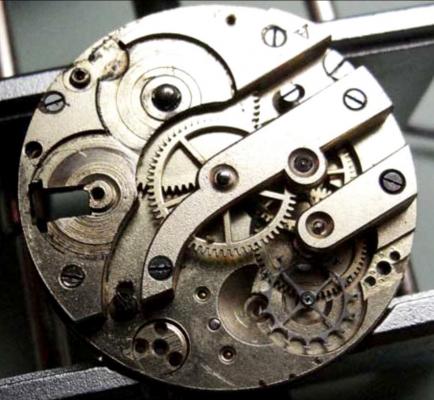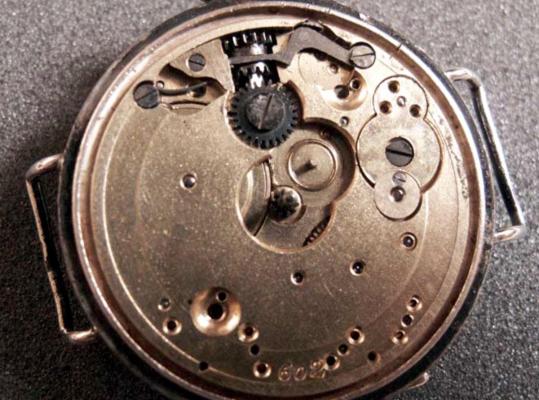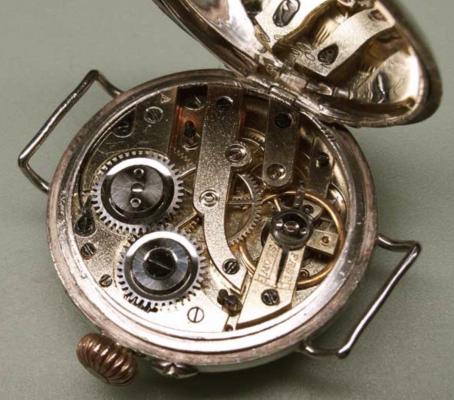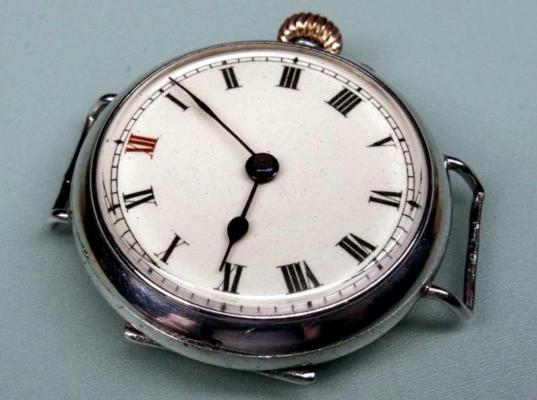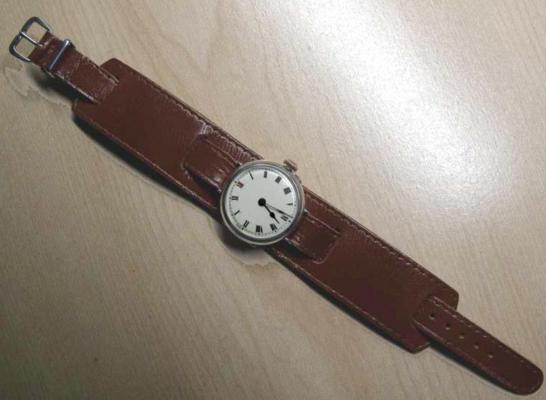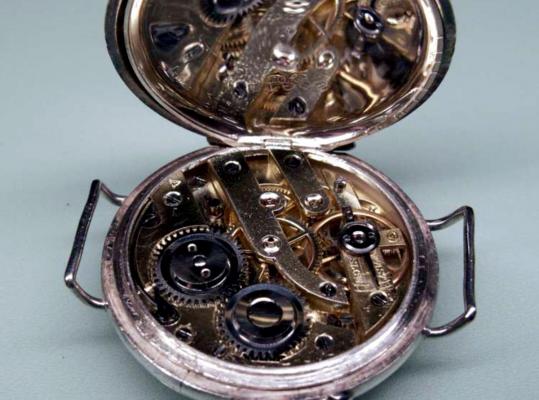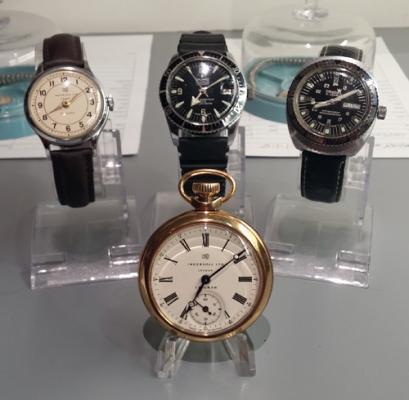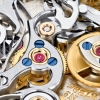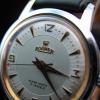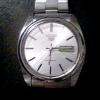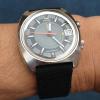Leaderboard
Popular Content
Showing content with the highest reputation on 02/25/15 in all areas
-
Welcome Tim, I believe all the advise has already been given by the pros, so all I can say, as an almost beginner (I'm starting to promote myself as say: junior beginner? or barely one notch over completely beginner!), ok, I was saying, all I can say is check out the tools sections in the forum and you will see lots of information as what is best so you can select or at least have an idea what will work for you...as we are all unique as far as comfort level and preferences. Now that's the beginning since you need a workbench, light, good optics, oils, cleaning equipment, etc. in addition to many of the standard tools. I would also recommend to watch all of Mark videos and if you have the time get an online "watchmaker" class like the TimeZone.com or the free Seiko class somewhere in the web (can't find the address now but you can search "7S26 service"). Seikos are good movement to start with, not too complicated and gives an idea of how everything should work. Filming your work is an excellent idea and as a film maker I'd say you have all the tools and know how...Gosh, If it was me, I would even make an action movie out of it with plenty of pretty girls in lingerie dancing around. Maybe would turn out better than "Titanic"! ...."Watchmaker 007"! :) Just kidding now! In any case, you are on your way for a great, and rewarding hobby. Hold on to the chronometer until you are more experienced and in the meantime practice, practice and practice...on lesser value movements until you work your skill up to the nice chronometer...and then practice a little bit more before tackling it just to make sure you are going to really restore/save that very nice heirloom! Cheers, Bob3 points
-
It transpired that the movement in the watch is a Fontainemelon 602 calibre with cylinder escapement. Here are a few photos, the first two were taken during the dismantling and the rest are the fruits of my labour. I replaced the mainspring and everything else was just given a good clean, lubricated then reassembled. After cleaning and assembly. The porcelain dial was in excellent condition with only the slightest of damage, luckily under the bezel where a knife has caught it in the past. There was also some brown staining from oil, this was easily removed with some household bleach. The crystal is original, easily identifiable by the small flat spot in the middle. I gave it the usual Autosol polish and it looks like new. I decided to leave all the historic marks on the case, and gave it a gentle polish with a silver cloth.1 point
-
Just done one with a pair of small & slightly blunt wire cutters supported with one of the wife's clothes pins, a very gentle nip & its worked a treat. Some swear by nail cutters.1 point
-
My gang of pin lever resurrected wrecks: L to R Ingersoll Triumph. New strap & crystal, cleaned & serviced. Waldman Submarine. New strap & crystal, cleaned & serviced. A ruby mine - 23 of them inside the EB8021 movement. Cronel. This one was bought as is for £5 and appears to be recently seviced. Haven't identified the 21J movement yet. Ingersoll Triumph Pocket. The case was so tarnished when it turned up it was almost black, also it didn't have hands, crystal or bow. The hands aren't correct, but they work. The great thing about these is they are all cheap to buy & repair, none have cost more than £20 including parts.1 point
-
ahha young grasshopper watchmaker becomes master watchmaker!1 point
-
Hi Guys Sorry to jump in here I have just been asked to look at a watch that has great sentimental value to its owner that is also has a similar problem, the watch works fine and is ticking away but the minute hand barely moves and he says it can take about 15-30mins for it to move but it still moves slow I do not know about the hr hand so I suspect a slipping cannon pinion and was wondering if they can be tightened in situ or do they need to be pulled and then tightened using a broach. I have already ordered the Bergeon tightener as I believe it will come in handy for other projects... Cheers Darren Sent from my iPad using Tapatalk1 point
-
1 point
-
Hi Tim, Welcome to the forum. I agree with the posts so far to take this watch on as a first timer will be a challenge. I would first practice on a few watches purchased from Bay i.e. job lots that can be picked up at very reasonable prices. Simple things like picking up parts with tweezers without them flying can be puzzling to start with, but better with a non valuable watch that a good watch. PS I have a wood movement holder but never use it, just to big & awkward.1 point
-
1 point
-
If you're on a budget (or you're as tight fisted as I am :D ) then you can't go too far wrong than to buy a self healing cutting mat to use for you bench mat. "The Works" discount stationers do an A4 size mat for £2.99 and an A2 size for £7.99. They are online if there isn't a branch near you. I use the A4 size mat that they supply and although it's a little darker in colour than the "proper thing" I find it pretty much ideal. That hairspring is a real mess but I believe that there isn't anything that simply can't be fixed; you just need to acquire the skills to do it. That may sound glib but it's a philosophy that I try to live up to and which may even make a watchmaker out of me. As others have already said though, if this is your first attempt then hang fire a bit. I don't think that there are too many people on here who would disagree that the usual route for a self taught watch tinkerer involves a fair few failures to start with so it would be unwise to start with anything of value (sentimental or cash). Far better to cut your teeth on stuff that doesn't matter before applying what you learn to the important stuff.1 point
-
I've just looked up some info on your clock and see where the 15 minute repeater confusion has arisen. Jungens did make a 15 minute "recorder", that referred to the chronograph maximum recording time. The one you have has a maximum recording time of 30 minutes as shown on the small dial.1 point
-
Hey Tim I wouldn't even start on the watch from your great great grandfather. Not saying this will happen but its very likely on your first few attempts you will break/loose something. i would honestly go on buy a few pocket watches that work to the extend that "they go for a few moments when shook" and work on these before tackling a keep sake or a extensive chronograph like the airpirt clock. This is my own opinion but experience is key for repairing of watches, even down to the ability to pick up a tiny screw and place it correctly without loosing it across the room. It would be a shame if you ruined one of those two items on your first endeavours of watch repair.. Looking forward to watching you become hooked like most of us. Good luck Jonathan1 point
-
1 point
-
Thank you and thank you. hmm. yes it is a little complicated isn't it. a 15 minute repeater I believe. Perhaps I'll start on an old pocket watch made by my great great grandfather! Saphin of London. I'll certainly be getting the eyeglass holder and the movement holder now then. I'm a film maker trying to become a watchmaker, so I'll try and film the entire disassembly of anything I touch while I'm learning. I was very nearly offered an apprentice position last month by a local and growing watch making company S. Michlmayr & Co. but I just couldn't have survived on the wage on offer. So I'll be a regular here for sure. There seems to be an enormous wealth of knowledge and experience here. cheers Tim1 point
-
There's a chart for ligne sizes and equivalents pinned on the Forum here: http://www.watchrepairtalk.com/topic/479-chart-for-watch-movement-sizes/1 point
-
I have been known to do it yes. Obviously if there are absolutely no other alternatives. Somebody mentioned lifting the dial to expose the keyless works. I have also had to do this on occasion, this is fine as long as the dial is friction fitted and not screwed in place.1 point
-
The lip on the dial is for positioning the chapter ring. You will notice a corresponding groove in the ring :) Before attempting to remove the crown (should come out with a strong pull), you really should replace the glass so as to protect the dial when you are taking out the crown.1 point
-
Colour temperature is listed at 6000 to 7000K, this equates to daylight. On full intensity it is so bright that instead of setting my camera at 800ASA, I now set it at 200ASA and can use a shutter speed of 350 to 500 which allows me to hand hold the camera easily without getting shake problems. I have been using the light for a couple of days now and it is easy on the eyes, especially with the dimming facility.1 point
-
1 point
-
Thanks Geo for the link! I'm on it, and looks like a winner for my set up! :) Unlike Geo, I would have given you a hand! :) Just too funny to pass up! Great looking laminate Mark! Cheers, Bob1 point
-
FOR SCREW DOWN CROWNS. (A) Screw down the crown tightly onto the case without the stem and measure the distance between the bottom of the crown and the case. (B ) Screw the new stem tightly into the crown, then insert into the watch until it engages and locks into the movement. (C ) Press the crown down firmly as far as it will go and hold it there. (D) Using the vernier callipers, measure the distance between the bottom of the crown and the case. (E) Subtract the size determined in (D) from the size measured in (A) then subtract a further 0.15mm from this size. This is the amount to shorten the stem by. This should allow the crown to screw full home without compressing the stem too tightly between the movement and the inside of the crown. (F) Cut the stem leaving it slightly longer than the size determined in (E), and dress down to size using the diamond lap and vernier callipers as described in the original post. (G) Screw the crown onto the shortened stem and check fit and function, before using a tiny spot of Loctite to secure. This is now added to original post by Geo.1 point




